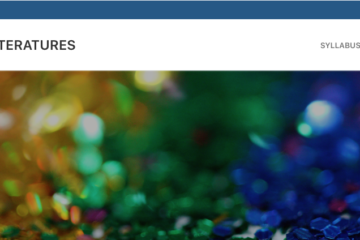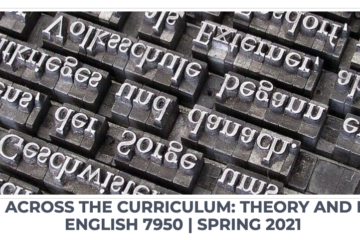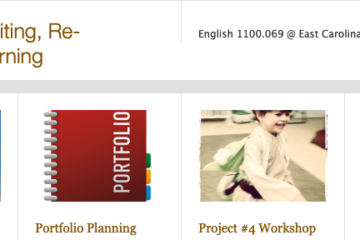It’s Sunday morning, and the rain is falling all around our little beach house. Around me, teachers are tapping away on their computers, talking about curriculum and change in their schools, stopping from time to time to be annoyed at yet another thing that is getting in the way of teaching, but what I hear and see are committed educators that remind me of why I love teaching and why I love the National Writing Project. These teachers have been working on our NWP-funded “Social Justice and Connected Learning” project. Since summer 2017, four cohorts of around 4-5 teachers each has been investigating in the local contexts of their schools how issues of justice and literacy work, and often don’t work, and what they can do as primarily language arts teachers to engage with social and restorative justice projects more fully.
I love them and I love this work. I’m blown away by the way two teachers — an art teacher and an English teacher — have been engaging in the metaphor of “monsters” to ask students (and themselves) about how we construct the monsters in our lives and what those monsters are, about how we participate in the monsters and how we contribute to their power … but not in that radical individualist way that would say, “Oh, you alone make this (psychological) monster that hurts you; you can fix it.” No, we’re part of it, no doubt, by our “agency” in those contexts is vexed and complicated, and helping young people not to own the guilt of being pummeled by the monsters they face while also planning strategies for keeping those monsters at bay … that’s powerful stuff! It also seems to be connecting young people to their communities and the elders there, to ask them what are the monsters of our community — racism, classism, sexism, sure, but also drug issues, unjust incarceration practices, structural issues with housing, etc — and how long have these monsters persisted.
And that’s just what one group is doing …
I’m reminded, in these moments, of how powerful the work of teachers can be, especially when we break out of any assumption that our goal is to “transmit” discreet bits of knowledge. These teachers are engaging their students through questions, big questions, and through frameworks for thinking. Helping young people see how metaphors and symbols are things to find in a book or poem but are actually powerful ways that we structure and understand our realities — and how we speak back to and critique those realities — opens a way for young people to see their worlds through other lenses, to imagine not just the monsters that oppress and harass us, but also how we might rob those monsters of their power, perhaps by attack but also by maybe reframing their monstrosity, perhaps understanding why we think those things are monstrous and whether or not those monsters are real or only frames that those with power use to limit our ability to think and feel better/differently about ourselves and others.
Recently, I finished Jason Reynold’s new Spiderman novel, Miles Morales: Spider-Man. I struggles with it a bit because it didn’t fit into my sense of what a superhero book would be like, and I was also hoping it would be a good book for Jackson, who is now 10 years old, but I think he wouldn’t yet be interested in some of the love/relationship elements and might not be ready for the adolescent perseverations of the protagonist. Maybe in in a couple years, though, because I think the central conceit of the novel where the “monster” that Miles Morales must work to defeat is the racisms embodied in teachers, prison guards, cops, and other figures who have power over the lives of young people through their interactions with them. In the novel, Miles’s “spidey sense” always seems to go off in his history class, taught by Mr. Chamberlain; in this space, the “other side” of the US Civil War seems to get a lot of attention, and as the days go along, the students of color in the room grow increasingly frustrated and uncomfortable at how the teacher seems to be validating the Confederacy and slavery. Eventually, Miles realizes that there are many Mr Chamberlains out there, and they work together to crowd prisons and drug dens with black bodies. It’s a brilliant book in the ways that it helps young people imagine the monsters, real and structural, that can trap us in systems hard to get out of, and often doing so before we even realize we’re there.
The projects that the TRWP teachers are working on at their schools are aimed at naming and exposing the Chamberlains — local, regional, national, international — that prevent us from participating in a more socially just world. That excites me, and it frustrates me to hear their stories of push-back and resistance, often from unexpected places, like parents that we think would be allies in these struggles.We’re in a good place when we have so many wonderful teachers out there working with young people.



0 Comments